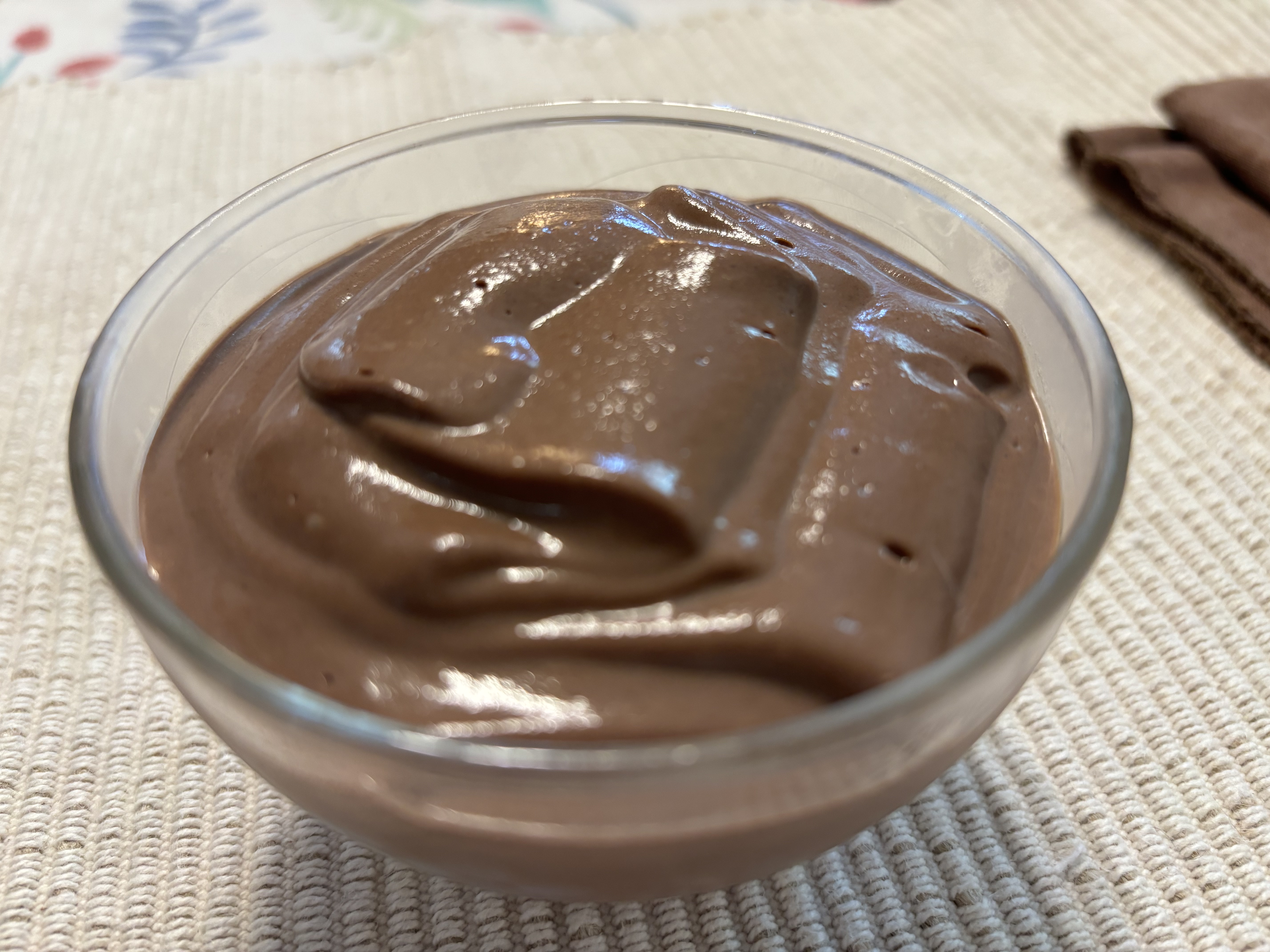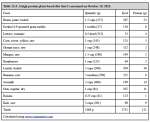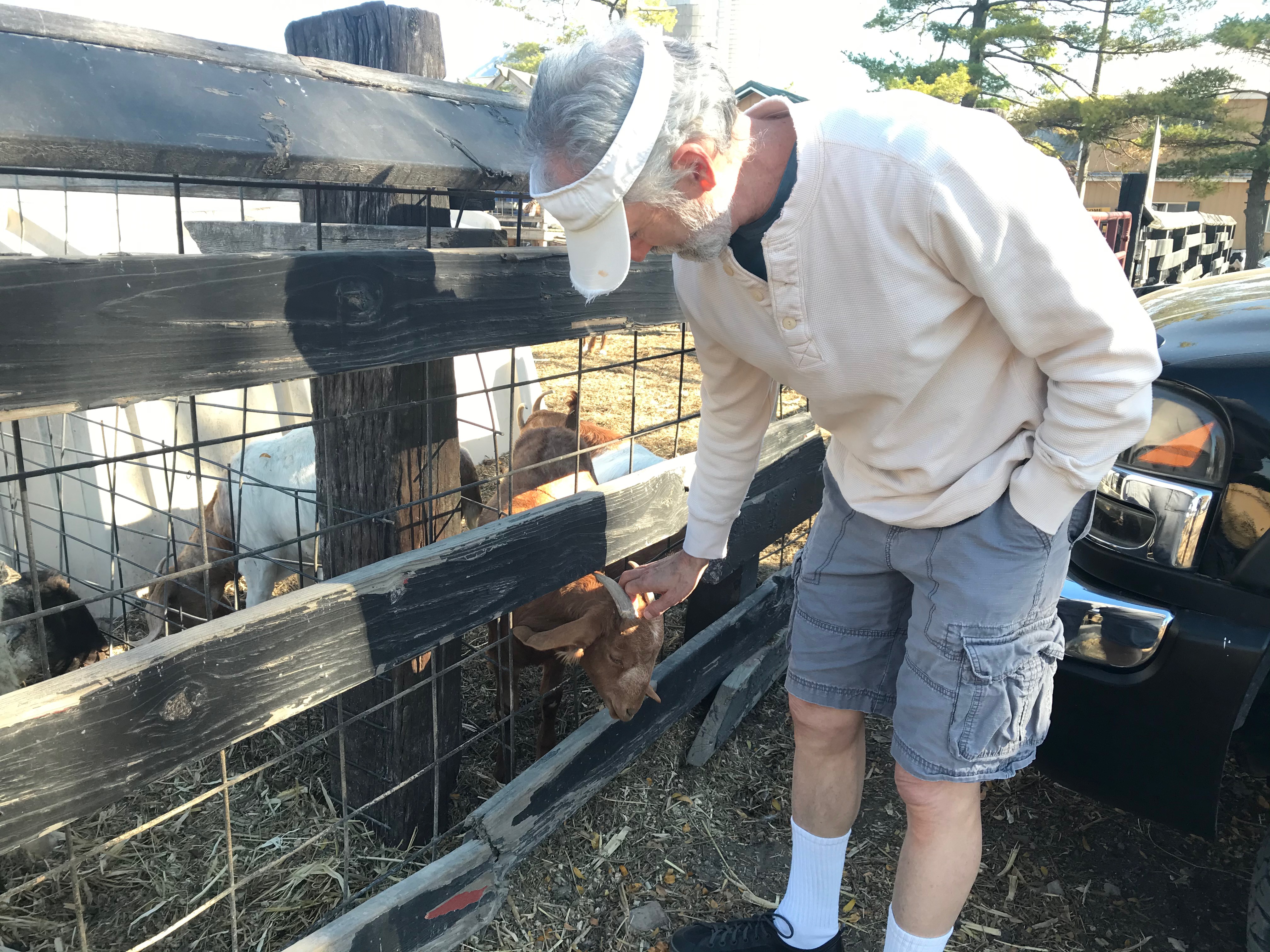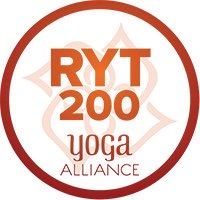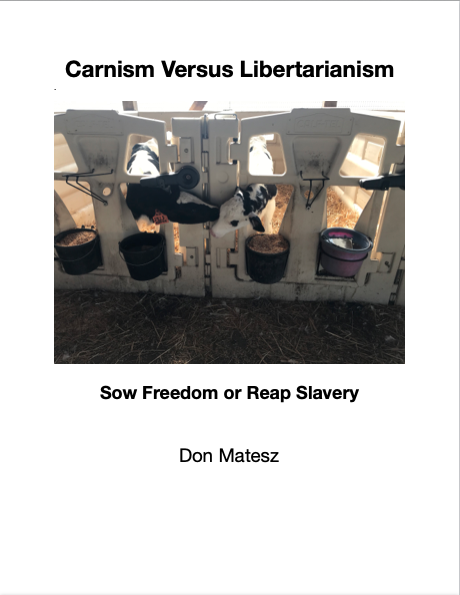Nordic Curl Critique
Not the best hamstring developer
Nordic Hamstring Curls (a.k.a. Nordic Curls) have become quite popular, with some people promoting them as the best of all hamstring exercises. According to some fitness influencers, mastering the Nordic curls will contribute to rehabilitating your knees and making them more resistant to injuries, while providing hamstring development unattainable by any other means.
I have tried Nordic curls off and on for several years now. When I followed the ATG Knee Ability program during 2021, I tried doing them regularly, but did not like them.
I would try them for a period, then give them up, never finding them comfortable. After experimenting with Nordic curls, thinking about the physics/mechanics of the exercise, and reading about knee injuries related to kneeling and reports of research comparing them to other bodyweight hamstring exercises, I have concluded that Nordic curls are a dangerous and inferior hamstring exercise, for the following reasons.
- Nordic curls increase the risk of anterior knee injury, particularly patellar tendon related injuries.
- Nordic curls don’t load the hamstrings more intensely than band, suspension, or sliding leg curls.
- Nordic curls have a poor resistance curve.
- Nordic curls don’t scale as easily or finely as other hamstring exercises.
Nordic Curls Increase Knee Injury Risk
To understand why Nordic curls increase knee injury risk, let’s analyze the mechanical forces on your knees when you perform the Nordic curl.
When you kneel as needed to perform the Nordic curl, you put about 89% of your bodyweight directly on your knees , and this smashes your patellar tendon between your femur (thigh bone) and the surface on which you kneel. Then you extend and flex your knee while the patellar tendon is being crushed by the load. As you lean out forward to perform the eccentric action, the force smashing the knee into the platform dramatically increases as your bodyweight is multiplied by a lengthening lever.
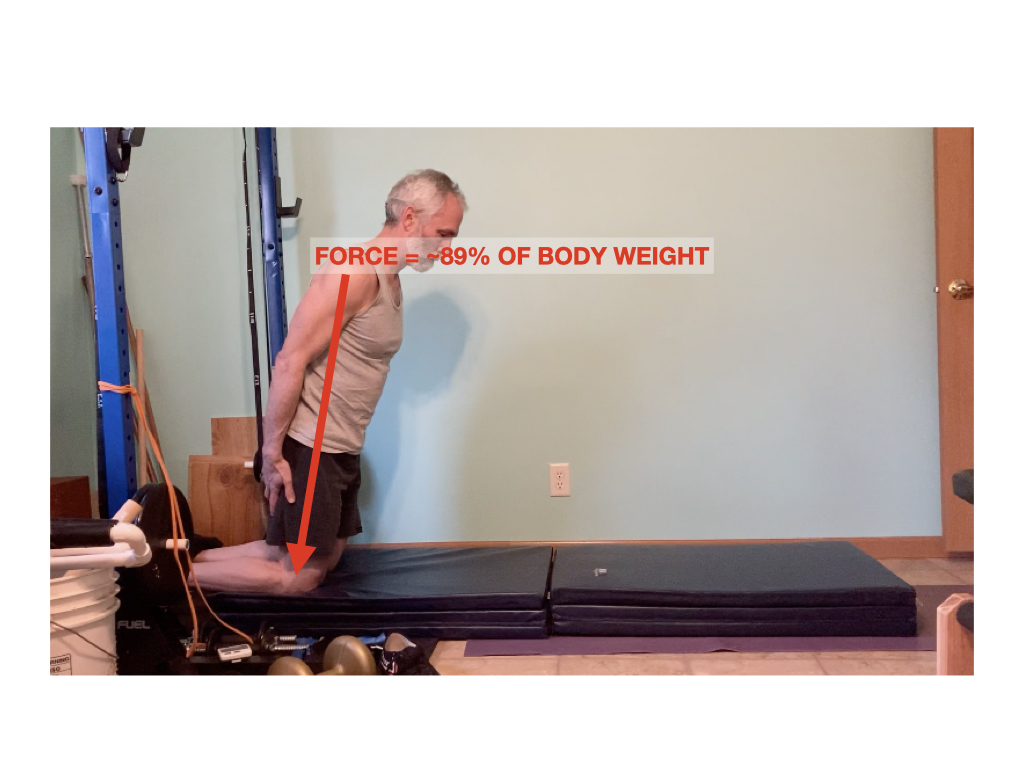 |
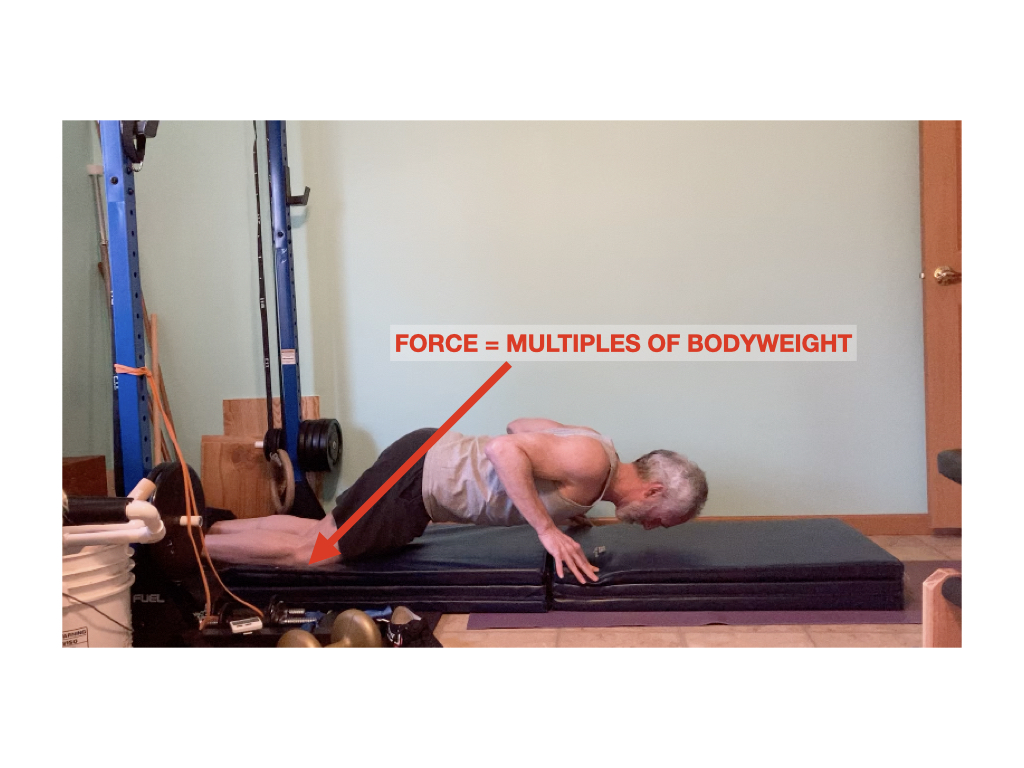 |
No other hamstring exercise is performed while the load is compressing the patellar tendon and its bursae, which are small sacs of fluid with thin linings that reduce friction between tissues.
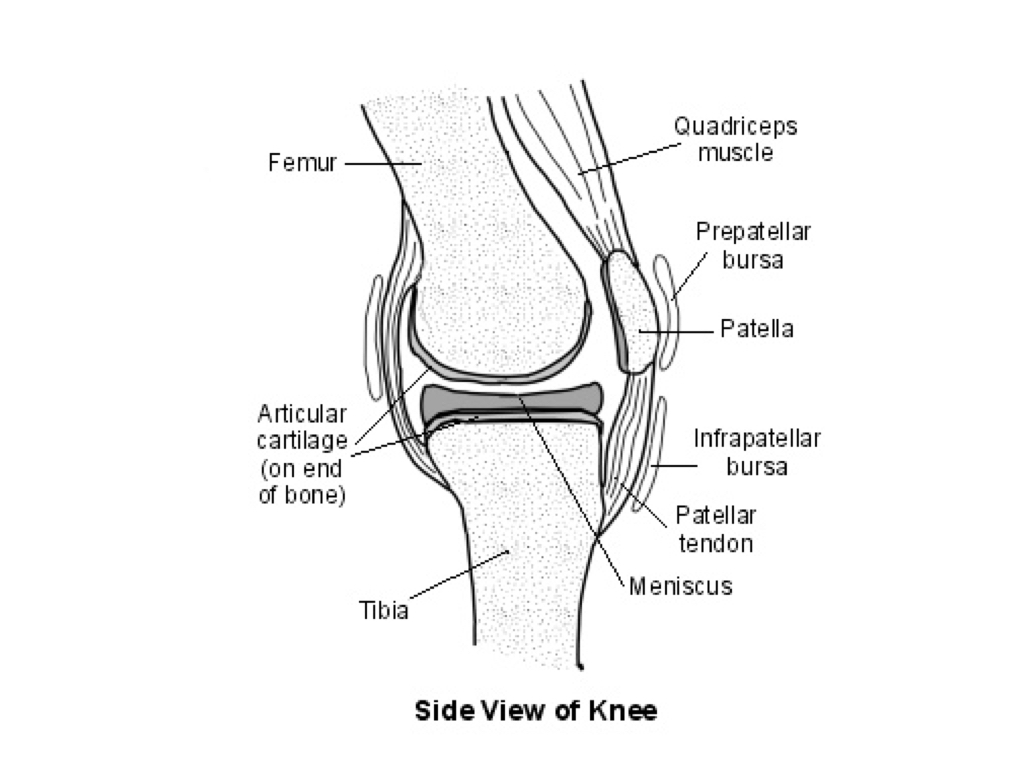
Extensive kneeling on your patellar tendon is a proven cause of knee injury. Prepatellar bursitis––a.k.a. housemaid’s knee––commonly occurs among people who spend long periods of time kneeling. Bursitis means inflammation within a bursa. The knee includes four bursae, of which those between the skin and the kneecap are most commonly affected. Housemaid’s knee is the name given to inflammation of these prepatellar bursa.
Carpet layers kneel to perform their work and the CDC reports that carpet layers frequently report bursitis of the knee, fluid buildup requiring knee aspiration, and a variety of symptoms that are caused by frequent kneeling on hard surfaces. Although carpet layers make up less than 0.06% of the U.S. workforce, they file 6.2% of all workers’ compensation claims for traumatic knee injury, a rate that is 108 times that expected in the total workforce and the highest rate of any occupation reporting such claims. Knee injuries also occur at a high rate among tilesetters (53 times that expected) and floorlayers (46 times than expected), other occupations requiring kneeling on hard floors.
People who advocate the Nordic curl will likely point out that individuals performing the exercise for hamstring development do not spend long periods of time kneeling on hard surfaces, but use a cushion under the knees, unlike carpet layers, tilesetters, floorlayers, and housemaids.
Although this is true, these occupations do not involve leveraging your bodyweight over the knee, forcing the patellar tendon and its bursae to operate while being crushed by forces equivalent to multiples of your bodyweight. In short, although use of the Nordic curl for hamstring training does not put pressure on the knees for extended periods of time, it does subject the patellar tendon to much higher forces than simple kneeling over short periods of time. Soft tissue injury can occur when the tissue is subjected to low forces over long periods of time (e.g. heel blisters after a long walk in ill-fitting shoes), or when it is subjected to very high forces over a short period of time (e.g. sprained ankle due to sudden torque).
Certainly Nordic curls are more likely to cause knee injury than hamstring exercises that do not involve loading 89% of your body weight (and multiples thereof) directly onto the patellar tendon. Does the Nordic curl provide such uniquely amazing training effect for the hamstrings that the risk is outweighed by the potential benefits? No.
Nordic Curl Hamstring Activation
There is no doubt that the Nordic curl puts tremendous pressure on the knee, and poses a greater risk of knee injury than hamstring exercises that don't require kneeling while flexing and extending the knee. This risk must be weighed against the potential benefit of performing the Nordic curl.
Proponents of the Nordic curl suggest that no other hamstring exercise can provide the same level of hamstring activation, development and injury prevention. However, research comparing the Nordic curl to other minimal equipment hamstring exercises has not supported this belief.
Tsaklis and colleagues compared the hamstring activation elicited by the lunge, bodyweight single-leg deadlift, kettlebells swing, bridge, suspension leg curls, hamstring bridge, standing leg curl with band resistance, Nordic curl, Fitball flexion, and sliding leg curl floor exercise. They did not find that the Nordic curl was the most effective exercise for eliciting strong hamstring contractions as measured by EMG.
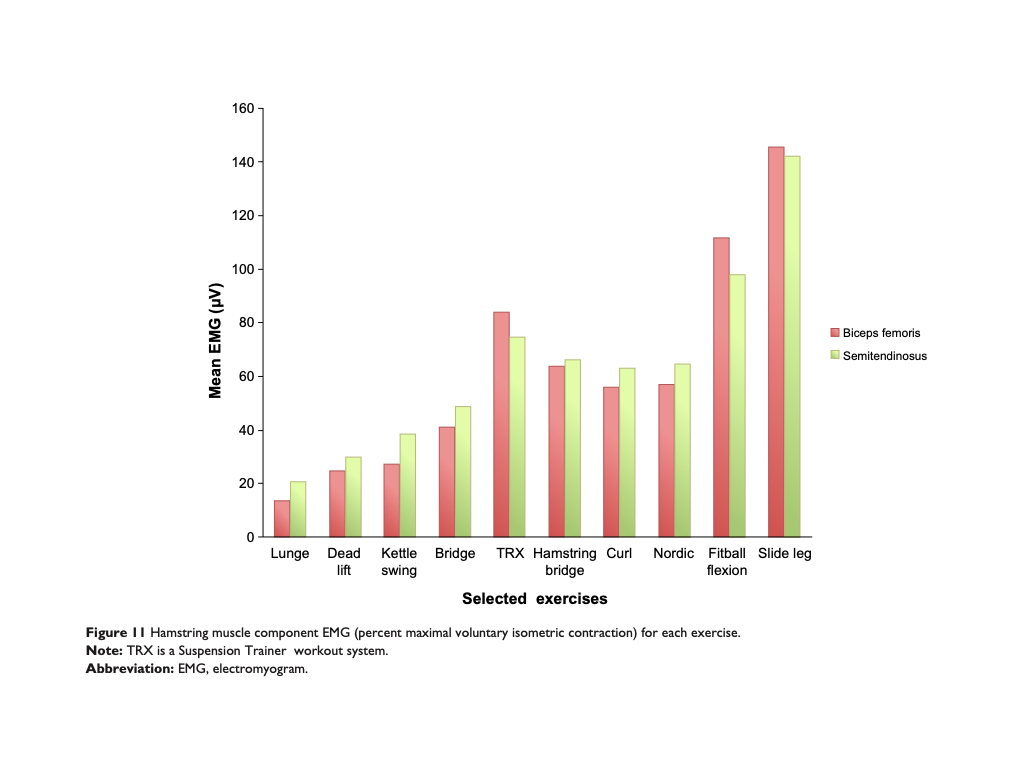
As shown, Tsaklis and colleagues found that the standing leg curl with band resistance and hamstring bridge elicited hamstring contractions on par with the Nordic curl, and several other exercises elicited hamstring activity greater than that produced by the Nordic curl, including the suspension leg curl, Fitball flexion, and sliding leg curl floor exercise.
I am not going to discuss the Fitball flexion exercise any further because, as illustrated by this photo, it involves only a very small range of loaded motion (when the heel hits the ball) with virtually no loaded eccentric action, as it consists simply of squeezing a stability ball between the legs and the thighs with a hamstring contraction.
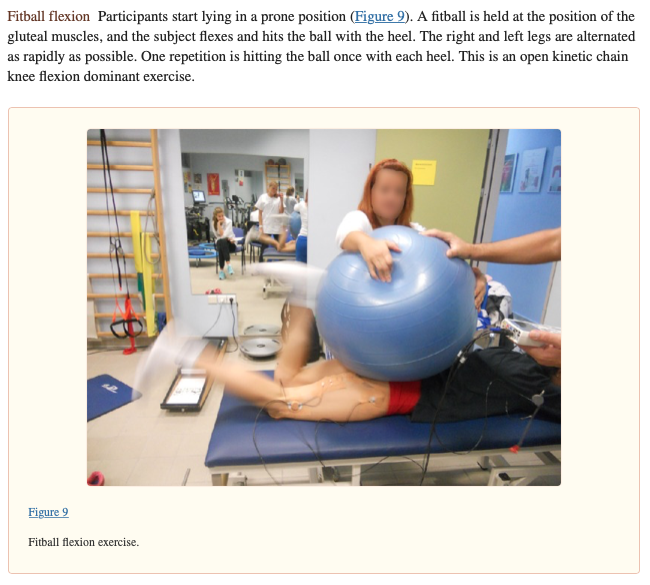
Although this can produce a strong hamstring contraction–– Tsaklis and colleagues found 100-120% of MVC––the absence of eccentric loading and resistance over the full range of motion makes this exercise inferior to the others.
In this study by Tsaklis and colleagues, the standing leg curl with band resistance was performed with a light resistance band and elicited a 60% MVC.
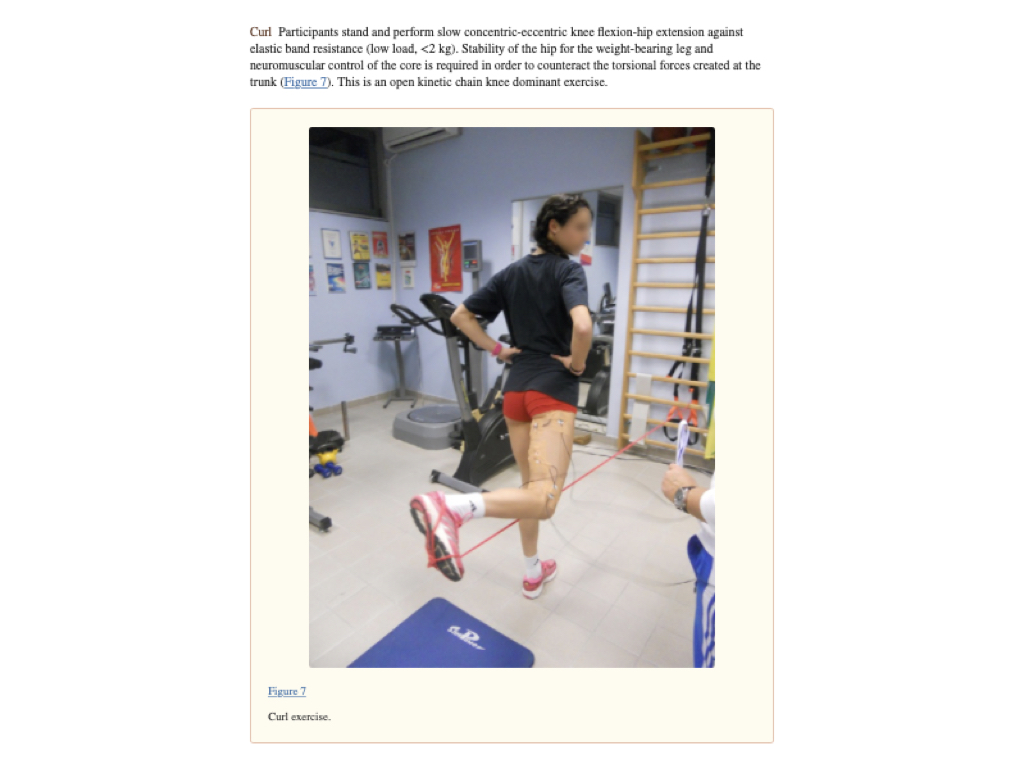
Tsaklis and colleagues noted that other studies have found that the leg curl performed with a load of 6RM produces a higher peak normalized EMG (81%). In other words, they admit that if they had used a heavier resistance band for the leg curl they probably would have elicited a greater hamstring contraction than they found elicited by the Nordic curl. In this older video I demonstrated performance of this exercise with torso stabilization and a higher (~8RM) load.
Properly set up, the standing band leg curl performed in this fashion engages both the hip extension and knee flexion functions of the hamstrings, and has the distinct advantage of training the hamstrings in the body position and range of motion they are used in running.
Tsaklis and colleagues found that the suspension alternating leg curl produced ~80% of maximal voluntary contraction of the hamstrings.
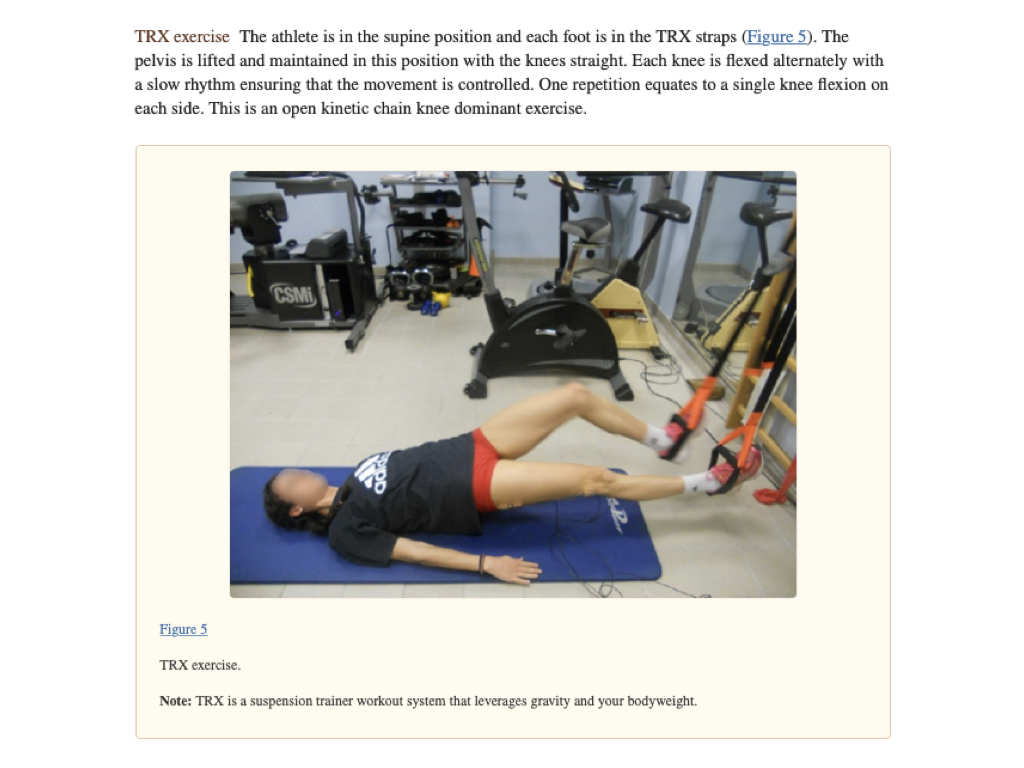
In my experience performing the suspension leg curl with alternating legs is much less difficult than performing the leg flexion bilaterally, evidenced by the fact that I can perform a bilateral set to momentary muscular failure, then immediately perform several repetitions unilaterally.
Although the supine posture is not the same as during running, the load on the hamstrings engages both the hip extension and knee flexion functions of the hamstrings, just like the standing band leg curl. As with the standing resistance band leg curl, the intensity of muscular activation can be increased by incrementally increasing the load; I will discuss the various methods later.
Tsaklis and colleagues found that the the single-leg slide leg curl (below) produced hamstring activation more than double that of the Nordic curl. The slide leg curl requires very little equipment––much less than the Nordic curl–– and unlike the Nordic curl puts no compression load on the patellar tendon.
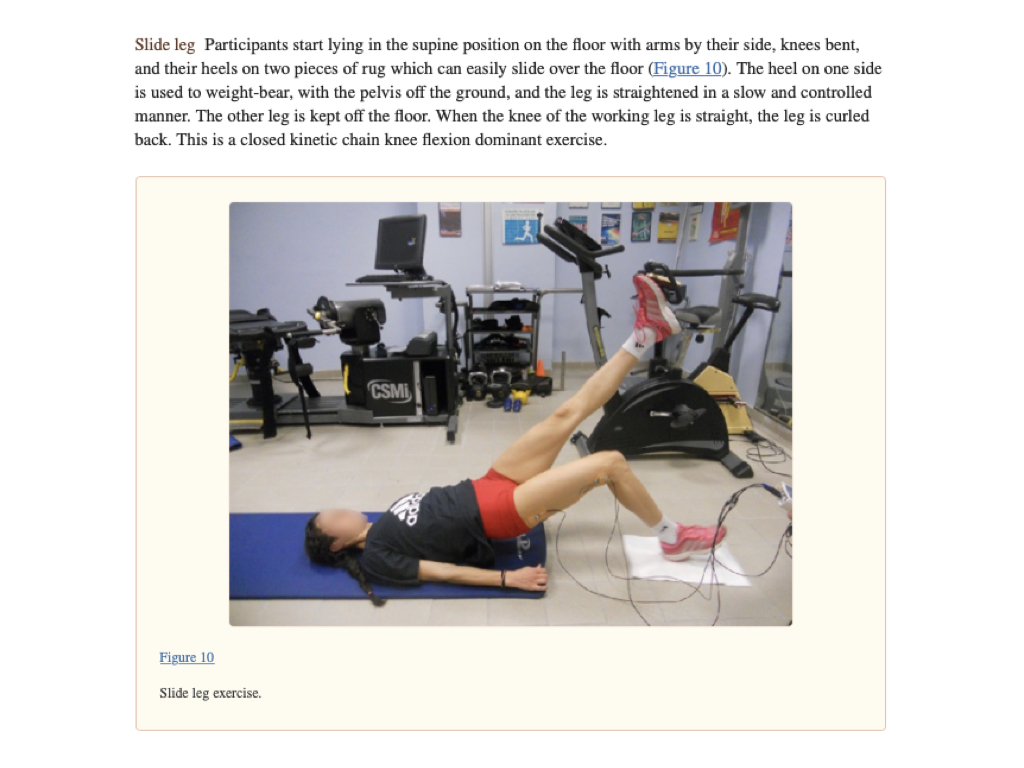
During the slide leg curl your heel(s) rest on the floor whereas during the suspension full-lay leg curl your feet are suspended, but in both the hips are extended and the entire posterior chain is engaged in maintaining a full-lay bridge. During the concentric action of the slide leg curl your hamstrings work against both the load provided by your body and the friction between your heel and the floor (which friction is absent from the suspension leg curl).
The action of the sliding leg curl is the same as the suspension leg curl while maintaining hip extension (as in running or the standing upright resistance band leg curl above). However, as shown above, Tsaklis and colleagues had their subjects perform the slide leg curl with one leg active and the other unsupported, which made the inactive leg part of the load put on the working hamstring, whereas they had subjects performing the suspension leg curl with both legs supported by the suspension device (a TRX trainer), so less load was imposed on the working leg. By having subjects perform the slide leg curl with a greater load than the suspension leg curl, they (probably unwittingly) designed the experiment so that it would make the slide leg curl appear to be more effective than the suspension leg curl.
Having direct experience with the cramp-inducing severity of the hamstring contraction produced by performing the suspension full-lay (open hip) leg curl, I am confident that if they had had the subjects perform the suspension leg curl with hip extension unilaterally they would have found that the suspension leg curl with hip extension elicits hamstring contraction similar to or greater than the slide leg curl, i.e. about double what they found the Nordic curl produced.
Further, when both slide and suspension leg curls are performed with hips extended, the suspension leg curls will provide a somewhat greater loading to the hamstrings when in the contracted position because the suspension device is a pendulum. By Nature, a suspended load pulled away from the vertical hang is drawn toward the neutral vertical hanging position. Thus, during the suspension leg curl the pendulum action pulls your leg into extension against the contraction of the hamstrings.
The sliding leg curl floor exercise lacks this force. Also, when doing the sliding leg curl, the friction between foot and floor provides resistance to leg flexion as one closes the knee (concentric action), but when you reverse the motion, unless the floor is very slick, the friction is also resisting extension of the leg, so as you open the knee the hamstrings are not as well loaded as in the suspension leg curl.
For all these reasons, I consider suspension leg curls to be significantly superior to the slide leg curl floor exercise for hamstring training. The slide leg curl floor exercise is a viable option if you don't have a suspension device and you do have a way to minimize friction between the feet and the floor, but if you can perform suspension leg curls they are a much better exercise.
In any case, Tsaklis and colleagues found that there is no special muscle activation benefit to performing Nordic curls. Several exercises can provide equal or greater hamstring activation without subjecting the knees/ patellar tendons to compression under bodyweight.
Moreover, some research suggests that training the hamstrings with simultaneous hip and knee flexion may produce superior hypertrophy outcomes with similar injury protection outcome. Indeed, injury protection outcome has been reported to be significantly superior when eccentric exercise is performed while a muscle is elongated rather than shortened.
This means that the Nordic curl is not the best exercise for either hamstring hypertrophy or injury prevention because it involves performing eccentric actions while the hamstrings are shortened by hip extension. Once again this research does not support the claim made by Nordic curl advocates that the Nordic curl provides any unique injury protection or superior hypertrophy outcome.
This research indicates that by performing either the suspension leg curl or the standing resistance band leg curl with flexed hips we may produce superior hypertrophy and equal or superior injury-prevention, without subjecting our knees to the potentially injurious forces discussed above.
We can perform either the suspension leg curl or the standing resistance band leg curl with flexed hips. To perform suspension leg curls with lengthened hamstrings, flex the hips while flexing the knees, as illustrated below:
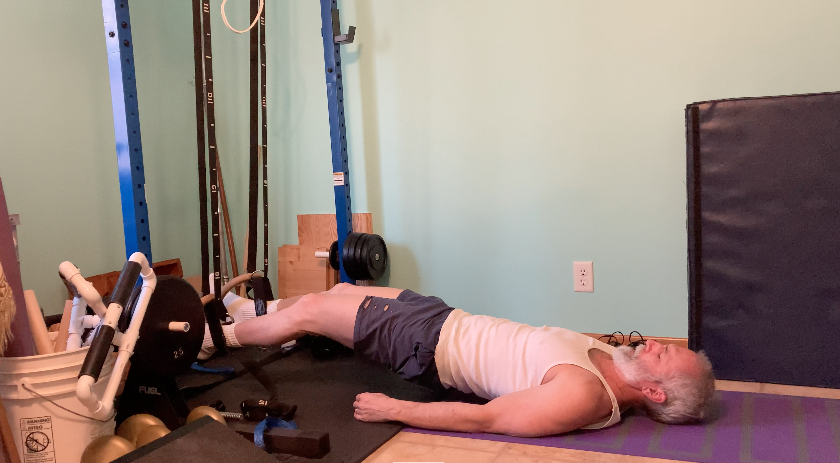 |
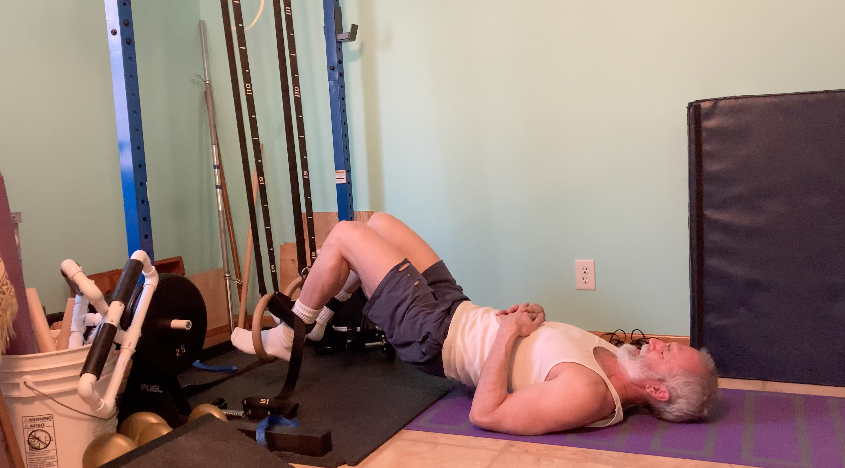 |
Tuck suspension leg curl
To accentuate the eccentric difficulty, simply extend the duration of the eccentric to 15-20 s. Alternatively, perform the concentric with bodyweight only, then grab and hold a heavy barbell plate (25 pounds or more) on your lower abdomen while performing the eccentric very slowly (~10 s), then remove the plate to perform the concentric, and so on.
The standing resistance band leg curl performance can also be adjusted to work the hamstrings while they are lengthened by setting up a bench to provide support so that you can bend at the hips (half pike position) as shown below.
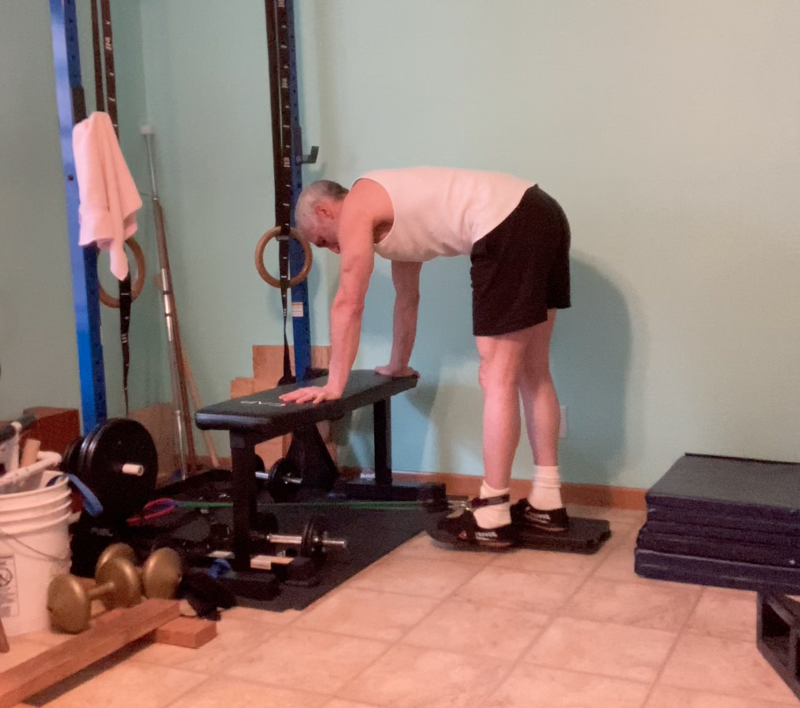 |
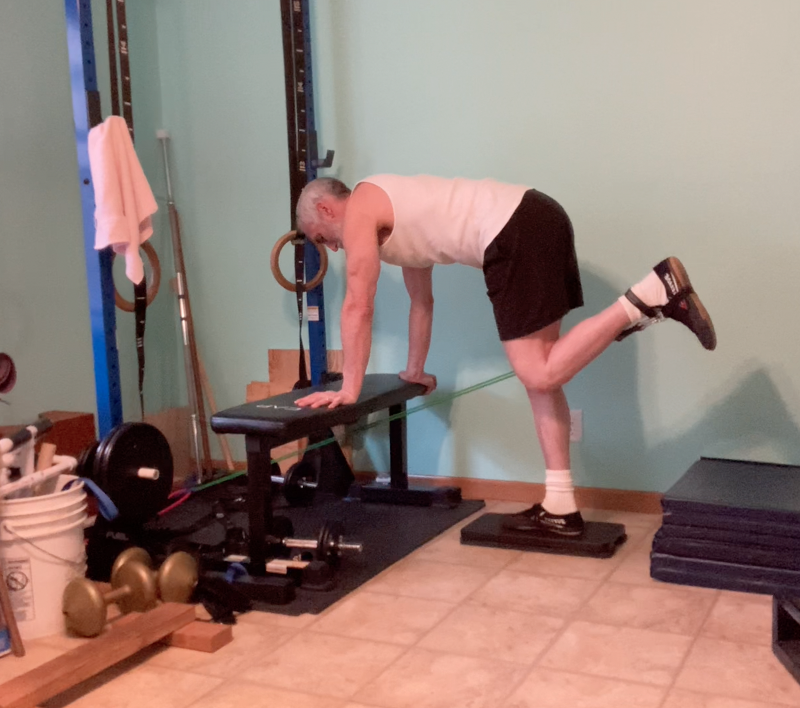 |
Standing piked resistance band leg curl
To accentuate the eccentric phase, simply extend the duration of the eccentric action to 15-30 s.
In summary, the Nordic curl does not provide any unique benefits that would justify subjecting your knees to the potentially injurious forces discussed above. The suspension leg curl and standing resistance band leg curl are just as effective and far safer to perform.
Nordic Curls Have An Inferior Resistance Curve
Nordic curls have a resistance curve inferior to that of suspension, slide or band leg curls.
During Nordic curls, in the initial position, when the leg is flexed (knee closed), the load (provided by your body) is borne by your femur and the patellar tendon, with very little work required by the hamstrings.
When you perform the eccentric of the Nordic Curl, the load on the hamstrings dramatically increases within the first 15-20º of movement, to the point that most people can’t perform a full eccentric without assistance from the upper body or bands.
In summary, during Nordic curls, the hamstrings are underloaded when they are most fully contracted and overloaded when extended and most vulnerable to injury.
In contrast, during suspension and standing band leg curls the hamstrings are loaded more evenly both when at length and when contracted. In both of these exercises the hamstrings are loaded both when the knee is extended (open) and when the knee is flexed (closed).
The suspension leg curl has the advantage of working the entire posterior chain, including the buttocks and spinal extensors all the way up to the neck, because these are all activated to maintain the full-lay bridge position required to perform the exercise.
Nordic Curls Are Not Easily Scaled
The other major problem with the Nordic curl is that it is difficult to scale (reduce or increase) the difficulty of the exercise in measurable small increments.
You can scale the Nordic curl by providing assistance with the upper body or bands, reducing or increasing range of motion, changing the angle of the board you use to do the exercise, or other means, but except for using a series of bands of incremental resistance, none of these methods is exactly measurable and most involve relatively large increments of difficulty. Moreover, none change the fact that you are grinding your knees into the mat with every repetition.
|
If you perform the standing band leg curl with Bodylastics or similar bands, you can adjust the load incrementally by stacking bands. With the Bodylastics system, the smallest increment is the yellow band, which provides only 3 pounds of resistance. This increment is appropriate for a single joint exercise for a large muscle group like the hamstrings. You can start with as little as 3 pounds of resistance and increase resistance by 2-3 pounds at a time up to 200 or more pounds by stacking bands. |
With the suspension leg curl you can adjust the difficulty by several methods. You can raise or lower the stirrups (or rings) in clearly measured increments (inch by inch); raising them reduces difficulty, lowering them increases difficulty. You can incrementally (inch by inch) change distance of your shoulders from the anchor of the suspension device; moving closer to the anchor reduces difficulty and moving further away increases difficulty. You can bend at the hips to reduce difficulty, or keep them neutral to increase difficulty. You can suspend both legs and perform the leg flexion one side at time to reduce difficulty, or perform bilateral leg flexion to increase difficulty. You can suspend only one leg, putting all of the load on one active leg while holding the other in a tuck position, to increase difficulty. Finally, you can incrementally add resistance using barbell plates (with a Brute Belt) or resistance bands.
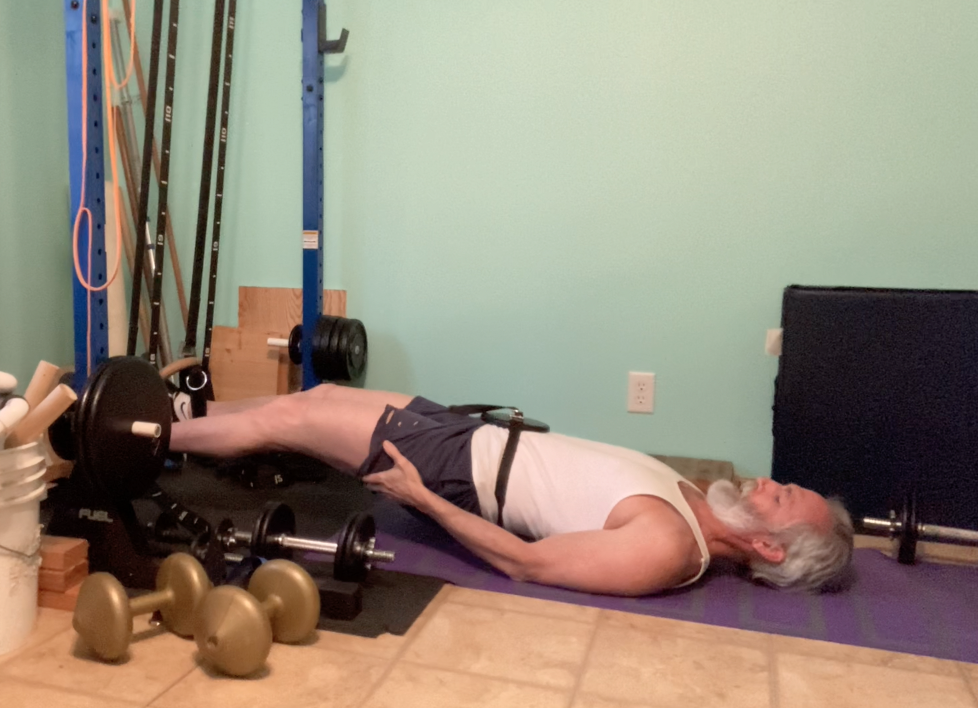 |
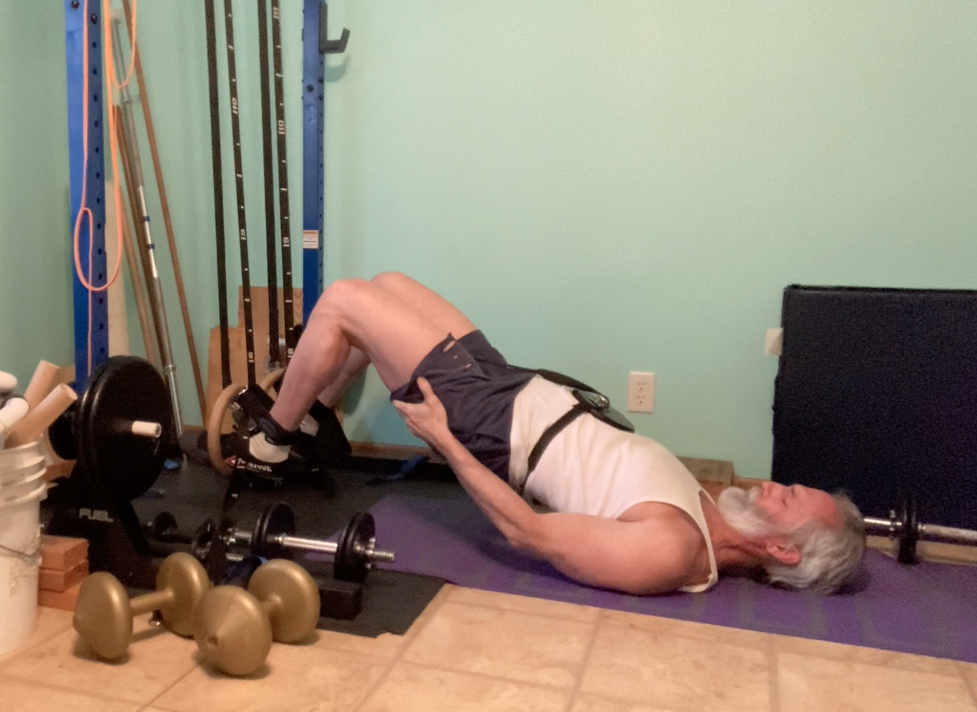 |
Suspension leg curl with 5 pound plate
To attach increasing plate loads to your waist, I recommend using the Brute Belt set up I demonstrated in this video (leg curls demonstrated at 11:18):
Summary
Since we have good evidence that we can realize equal or superior strength, hypertrophy and injury-prevention outcomes from hamstring exercises that do not involve subjecting the patellar tendon to forces that can cause bursitis or other knee injury, I see no rational case for using the Nordic leg curl for hamstring training. You can use resistance band leg curls, suspension leg curls, or slide leg curl floor exercise to get equal or greater hamstring training effect without increasing the risk of knee injury by opening and closing the knee while it is compressed under the load.
|
To perform standing resistance band leg curls I use Bodylastics bands. They are made with high quality materials, come in graduated increments, and incorporate an anti-snap technology to prevent injury in case a band snaps during use. Further, Bodylastics will replace any band that fails during normal use at no cost to you for the band itself (you pay only for shipping). |
|
To perform suspension leg curls I use my wooden rings with the Bodylastics ankle straps to form a saddle for my feet. If you purchase a Bodylastics resistance band set, you get the ankle straps with the bands. Add in a CAP squat rack with chin up bar you have the fundamentals for a complete home gym. |
Recent Articles
-
Ancient Roman Soldier Diet
Apr 14, 25 05:19 PM
A discussion of the ancient Roman soldier diet, its staple foods and nutritional value, and a vegan minimalist version. -
High Protein Chocolate Tofu Pudding
Jul 01, 24 12:41 PM
A delicious high protein chocolate tofu pudding. -
Vegan Macrobiotic Diet For Psoriasis
Sep 05, 23 06:36 PM
Vegan macrobiotic diet for psoriasis. My progress healing psoriasis with a vegan macrobiotic diet. -
How Every Disease Develops
Aug 04, 23 06:22 PM
How every disease develops over time, according to macrobiotic medicine. -
Why Do People Quit Being Vegan?
Jun 28, 23 08:04 PM
Why do people quit being vegan? How peer pressure and ego conspire against vegans. -
Powered By Plants
Mar 16, 23 08:01 PM
Powered By Plants is a book in which I have presented a lot of scientific evidence that humans are designed by Nature for a whole foods plant-based diet. -
Carnism Versus Libertarianism
Dec 30, 22 01:55 PM
Carnism Versus Libertarianism is an e-book demonstrating that carnism is in principle incompatible with libertarianism, voluntaryism, and anarchism. -
The Most Dangerous Superstition Book Review
Nov 15, 22 08:46 PM
Review of the book The Most Dangerous Superstition by Larken Rose.

